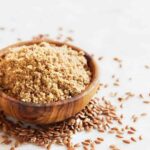Be the Change: Part 3 of 3
Can we talk about ways to walk against the current because we want to Be the Change? I hope you’ll share your ways too, so we can all learn from you.
On airplanes, I hate that they keep bringing everyone cup after cup of water. I keep my cup and ask for refills. (I wish I could bring water from home, but obviously that’s not possible.) Flight attendants say, “I’ll bring you a fresh one,” and I explain, “No thanks, I’m trying to make a small carbon footprint.”
Some just give me a strange look because they may not be familiar with the term. I don’t know where it comes from, but to me it means walking lightly on the earth. Not leaving deep tracks that hurt the next generations. Minimizing the amount of fossil fuels that had to be pulled out of the Earth just because I lived here.
I don’t want to take more than my “fair share” of resources. It means I don’t use stuff with lots of packaging.
What are things YOU do, to opt out of so much use of fossil fuels, so many throw-away items heaping up the landfills, so much excess?
Some of mine:
I always re-use water bottles (until I lose them or they break). I fill them with filtered, alkaline water from home, rather than the kind that has to be flown and trucked all over the world. (And which cost twice as much as gasoline, by the way!) When traveling, I try to buy gallons of filtered water rather than water bottles. Over 1 million water bottles go to landfills daily.
I refuse the napkin they give you with the drink on airplanes. In a restaurant, I take just one napkin, and look for ways to minimize the amount of throw-away stuff I’m given to hold my food.
I avoid overeating.
I eat plants, since eating animals is one of the most unsustainable practices there is. (It takes 20 lbs. of plants, and 1,000 gallons of water, to make 1 lb. of meat!)
I reuse grocery bags indefinitely. I refuse them if my items can fit in my purse. Or I take my reuseable ones.
I buy very little that comes in boxes or cans.
I recycle.
I don’t take a newspaper anymore and choose paperless billing.
I garden, organically.
I compost. I take other people’s bags of leaves, and compost them, too. (I let my own leaves compost in the lawn.)
I don’t spray for bugs.
I use organic, biodegradable cleaners and soaps.
I teach my kids to do all this stuff.
I would love to hear your ways of leaving a smaller carbon footprint? I want to learn more, do more.
Posted in: Mind/Body Connection, Tools & Products













